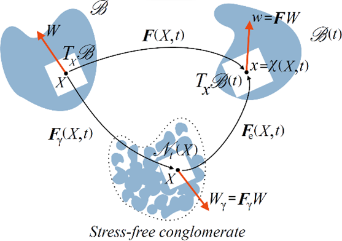Multi-scale modelling of living tissues
The conception and solution of multi-scale, mathematical models describing the overall behaviour of heterogeneous biological tissues are of great relevance in the study of the evolution of diseases, such as cancer, and in the design of bio-inspired and bio-mimetic materials.
Here at the School of Mathematics & Statistics, members of the Continuum Mechanics group have been conceiving multi-scale and interdisciplinary approaches to develop reliable models to study multi-scale, heterogeneous media, such as the heart, bones, and tumours, in a multiphysics framework.
For instance, part of these investigations has concentrated on the mathematical modelling of the connections of the visible transformations of biological tissues with the chemical, electrical, and mechanical interactions occurring inside them (see e.g., [1,2]). Capturing the "two-level" nature of the phenomena that these models are meant to resolve, is a necessary step towards the comprehension of the evolution of biological tissues.

Figure 1: Schematic of the structural transformations that accompany the “visible” motion [3].
[1] Ramírez-Torres et al. (2021) Mathematics and Mechanics of Solids, 26(9):1264-1293.
[2] Grillo et al. (2019) GAMM-Mitteilungen, e201900015.
[3] Di Stefano et al. (2018) International Journal of Non-Linear Mechanics, 106:174-187.
Researchers
- Dr Ariel Ramirez Torres
- Prof. Xiaoyu Luo
- Prof. Nick Hill
- Dr Hao Gao
- Dr Raimondo Penta
- Prof. Peter Stewart
- Dr Steve Roper
Organisations

